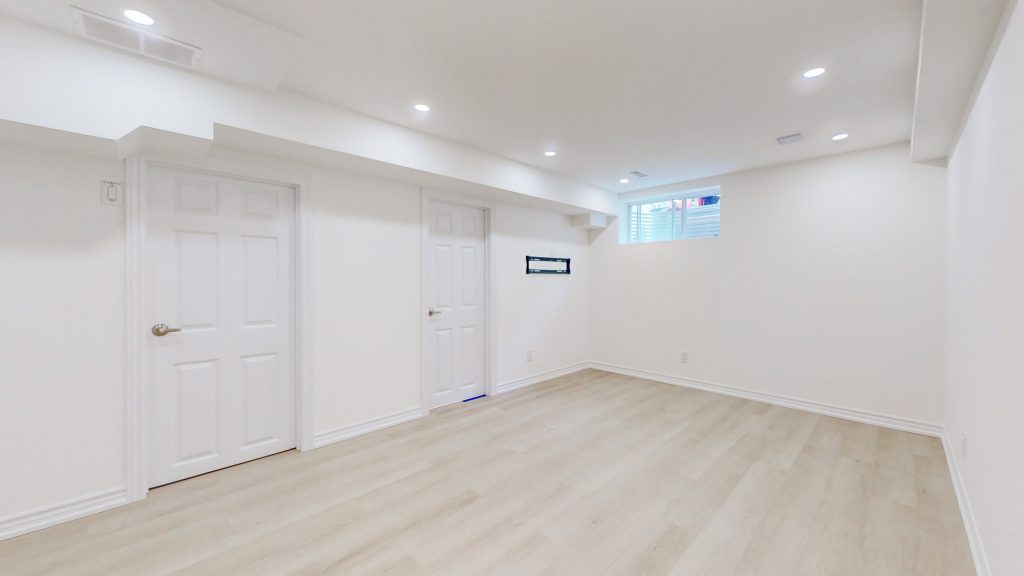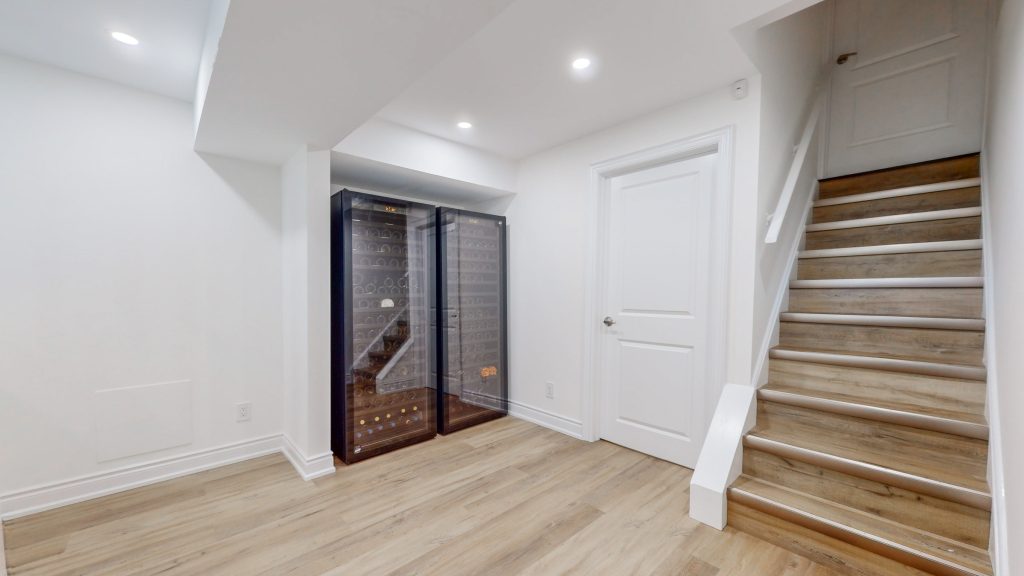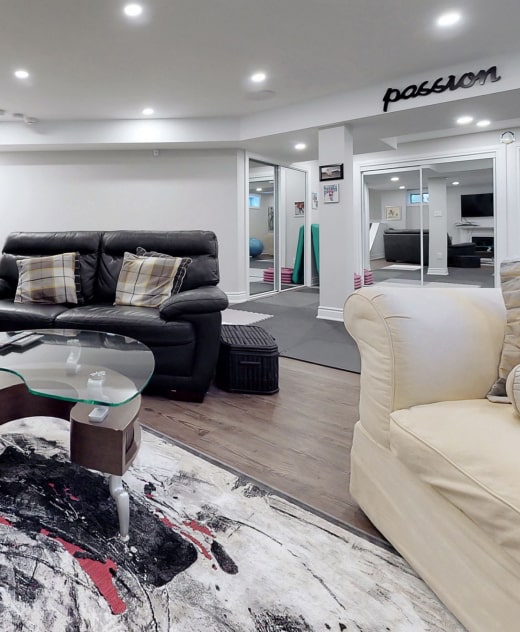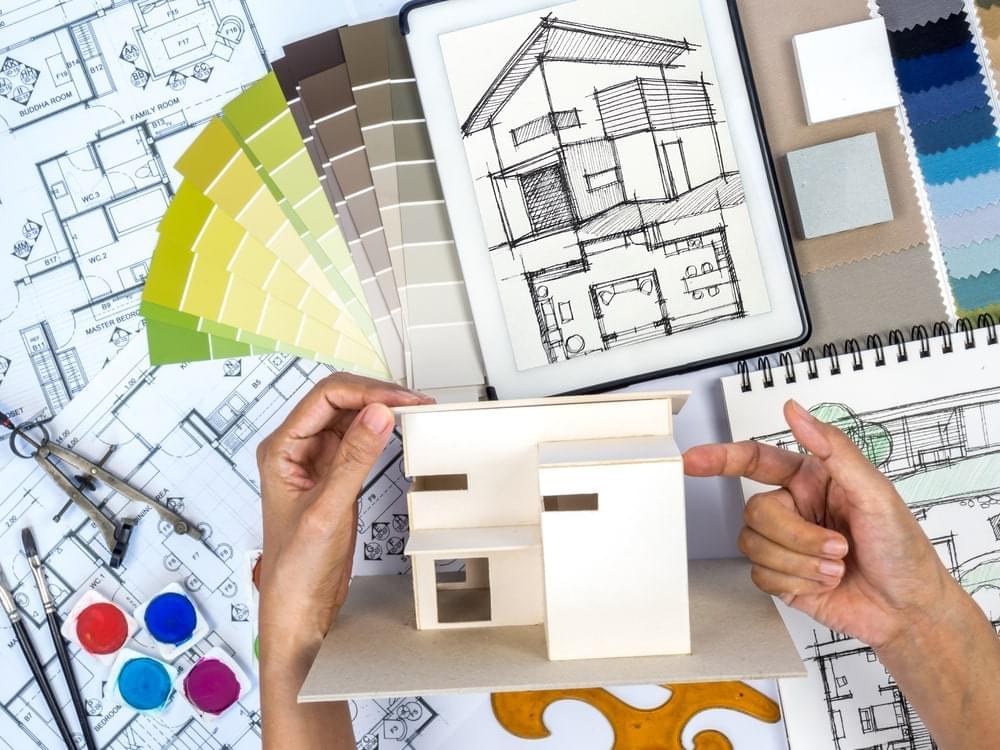What to Do With Floor Drains When Finishing Basement
Floor drains in a basement steer water into the sewage system, preventing flooding. But these fixtures aren’t very visually appealing.
What to do with floor drains in the basement? Many homeowners end up covering their basement floor drains when finishing the floor because of their appearance. They either cover the drains temporarily using temporary caps or permanently using cement.
But is covering a floor drain a good idea? It is worth thinking about during the basement renovation phase. Before deciding on this, continue reading to see the pros and cons of having a floor drain.

What Exactly Is a Floor Drain?
Basement floor drains are a type of drainage system included in the original construction plan of a basement renovations. It is usually a round or square drain cover installed in the floor and connected to a drain pipe that carries water from the home to the municipal sewer system or a septic tank and the floor around the drain mildly slants towards it.
Primary function:
The primary purpose of a floor drain is to collect and remove water that may accumulate on the floor. This can be water from:
- Plumbing leaks
- Condensation from appliances such as water heaters and heating, ventilation, and air conditioning systems
- Spills or cleaning
- Minor flooding from external sources
Without a floor drain:
- Without a working floor drain, any water that enters the basement can accumulate on the floor, causing damage to floor coverings (such as carpet or laminate), walls and insulation, objects and furniture.
- Standing water creates the perfect conditions for mold and mildew to grow. A floor drain helps keep your basement dry and healthy.
Many building codes require at least one functional floor drain in a basement or utility room to eliminate unexpected water accumulation. This is an important safety measure that prevents small leaks from turning into serious flooding problems.

Finishing Options Around Floor Drain Openings
When finishing a basement, it is important not to compromise the functionality of the drain opening in an attempt to hide or cover it. Here’s how you can balance functionality and aesthetics:
- Ensure accessibility with a cover or grate. This will maintain access to the drain while adding decorative appeal. These covers come in a variety of styles and finishes and can be easily matched to the color and texture of your floor.
- Extend the drain pipe to floor level if necessary. If you are adding layers of flooring (such as tile, vinyl, or engineered wood), the drain may end up below the level of the new floor. A plumber can install an extension sleeve or lift for the drain so that it is level with the new floor. This will ensure that water continues to drain freely and eliminate the risk of tripping.
- Use a recessed drain cover that matches the floor covering. These covers have a tray insert that can be filled with a piece of tile or flooring material, making them virtually invisible.
Important! Avoid permanent sealing unless it is obsolete.
It may be tempting to seal the drain permanently if you never see water in the basement. However, this can lead to flooding problems in the future if water unexpectedly seeps in.
Only consider sealing a drain if it has been deemed obsolete by a professional plumber (e.g., if it is no longer connected to working plumbing).
Pros and Cons of Having a Floor Drain
| Pros: | Cons: |
|---|---|
|
They come in handy when you need to collect water from different sources such as leaking water heaters, basement humidifiers, and dripping condensation lines. |
Installing a new floor drain in an existing basement is an expensive and difficult task — it may require sloping the floor or remodeling it to ensure water drains into the drain. |
| When properly maintained, floor drains work automatically — no need for manual cleaning in the event of minor water leaks. | Installing a new floor drain in an existing basement is an expensive and difficult task — it may require sloping the floor or remodeling it to ensure water drains into the drain. |
| In many regions, floor drains are required in basements or utility rooms to ensure that homes comply with safety standards and building codes. | Without regular cleaning, floor drains can become clogged with debris, reducing their effectiveness. |
Keep Your Basement and Everything in It Dry
Installing a water drain doesn’t guarantee that water won’t leak into the basement through the walls. Even if your floor drain is working properly, taking extra steps to keep water away from your foundation is key. Here’s how to tackle it from both the outside and the inside.
Exterior Solutions
Proper landscaping and planning
Make sure the ground slopes away from your home’s foundation. This will help divert rainwater and melting snow away from your basement walls.
Gutters and downspouts
Keep your gutters clean so they can properly collect rainwater from your roof. Extend downspouts at least 6 feet away from the foundation to prevent water from pooling near the basement.
Exterior drain pipes (or foundation drain pipes)
These underground pipes collect and divert water that accumulates around the foundation. Drainage pipes are especially effective when installed during construction and can help prevent hydrostatic pressure that pushes water into basement walls.
Internal Solutions
Drainage pump system
A drainage pump is installed in a sump (drainage pit) under the basement floor. It collects seeping water and pumps it away from the foundation.
This is necessary in areas with high groundwater levels or heavy rainfall.
Internal French drain systems
These are installed around the perimeter of the basement floor, under the slab. They collect water from under the basement floor and direct it to the drainage pump.
French drain systems are particularly effective for solving groundwater problems.

Talk to the Pros
Poor drainage is a very common basement finishing mistake that many homeowners made in the past. When a basement is finished like about-the-ground spaces, it’ll end up smelling damp and moldy. Nowadays, regulations require that homes be built with a floor drain leading to a collection pit. A sump pump then removes the water from the pit onto the surface.
The team at CSG Renovation handles basement finishing like the unique job it is, for long-lasting results. Call us on (647) 428-0007 to get an estimate on how much it’ll cost you to install a basement waterproofing solution or basement underpinning. It’s not too late to help prevent or even remedy a muggy basement.





